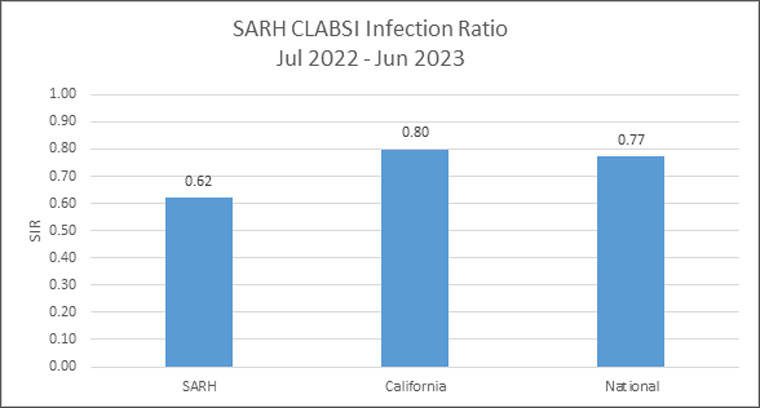Performance
LEAPFROG Hospital Safety Grade

Central Line Associated Blood Stream Infection (CLABSI)
What are we measuring and why?
A central line is often necessary to receive fluids and medication. Sometimes patients can develop infections associated with these catheters, especially if they have a weak immune system or have chronic diseases. To reduce the risk of infection, it is important to maintain the cleanliness of the line and insertion site as well as removing the line as soon as possible.

How do we measure?
What are we doing to improve?
What can you do?
Patients are encouraged to remind their care team to take necessary precautions to reduce risk of infection. Patients and family members should also feel empowered to ask about the necessity of a central line to assure its appropriateness and that it is removed as soon as possible.
Appropriate hand hygiene by the care team, patient, and visitors is an important part of infection prevention.
Colon Surgical Site Infection
What is it?
An infection that occurs after a patient has colorectal surgery that occurs at the body site where the surgery took place. While some infections only involve the skin (superficial), others are more serious and can involve deeper tissues, organs, or implanted materials. The value shown below is a Standardized Infection Ratio (SIR), which is the ratio of the actual number of infections to the expected number of infections during the measurement period. An SIR below 1.0 indicate that the numbers of infections after colon surgery are below the number of expected infections.

Flu Vaccination
How are we doing and how do we compare with the U.S. benchmark?

What you can do:
- Take time to get a flu vaccine
- Take everyday preventive actions to stop the spread of germs
- Take flu antiviral drugs if your doctor prescribes them
Willingness to Recommend the Hospital
As part of the HCAHPS (Hospital Consumer Assessment of Healthcare Providers and Systems) survey about their experience at San Antonio Regional Hospital (SARH), patients are asked if they would recommend the hospital to their family and friends. This data provides San Antonio with an opportunity to measure our patient’s overall experience during their hospital stay.
How are we doing and how do we compare to the National and State Benchmarks?
For July 2022 to June 2023, our survey results indicate that 67% of our patients would recommend San Antonio Regional Hospital to their family and friends. The current Centers for Medicare and Medicaid services (CMS) national average is 69% and the California average of 66%.

